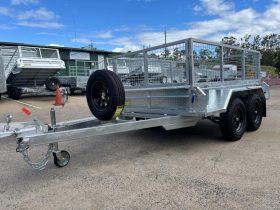Federal Signal lights are trusted across ports, plants, and public fleets where clear signalling prevents incidents and keeps operations moving. Buyers often focus on luminosity and price, yet long-term reliability depends on approvals, materials, mounting, power design, and service support. When you work with an authorised Federal Signal distributor, you secure parts, warranty coverage, and a roadmap for upgrades across models and infrastructures. Use these points to build a defensible specification that balances visibility and durability. Specify colour conventions for statuses so crews interpret alerts without delay, and validate them during drills.
1. Match Standards to the Environment
Start with the rulebook. Hazardous areas require ATEX or IECEx certification; public roads need ECE or DOT compliance; marine sites look for IMO and class acceptance. Document ingress protection, impact resistance, salt mist, and UV stability fit for your site. Federal Signal lights span beacons, sounders, strobes, and LED bars, but only the right approvals keep audits smooth and insurance valid.
2. Choose Optics and Candela for the Job
Brightness is only useful when the beam pattern matches the task. For road and airside vehicles, specify optics that focus output to a distance without glare. For plant deck visibility, prioritise wide angles and synchronised flash for group recognition. Confirm candela, colour purity, and effective intensity at your mounting height. The best Federal Signal distributor will provide photometric data, demo units, and guidance on human-factors placement.
3. Engineer Power and Control Interfaces
Poor wiring undermines good hardware. Decide early between steady-burn, flashing, and multi-pattern control. Validate current draw against existing looms, and check inrush behaviour on LED models. If you integrate with PLCs or CAN bus, confirm protocol options, trigger voltages, and transient protection. Use surge suppression and sealed connectors so vibration and weather do not produce intermittent faults that chew up maintenance time.
4. Select Materials for Heat, Vibration, and Chemicals
Lenses and housings must tolerate local punishment. Polycarbonate resists impact; borosilicate handles heat; stainless fixings resist corrosion. On forklifts and tugs, choose shock-rated mounts that keep alignment. In chemical plants, confirm gasket and lens compatibility with solvents and cleaners. Federal Signal lights are built for tough duty, but durability still depends on choosing the model whose bill of materials suits the environment.
5. Plan Mounting Positions That People Notice
Signals serve people first. Map sightlines for drivers, deck crews, and pedestrians at typical and low-visibility heights. Avoid backlighting against the sun or high-gloss panels. Use contrasting backplates where needed, and maintain clearances for service. A practical Federal Signal distributor can survey a site, recommend bracket kits, and produce layout drawings that reduce blind zones and cut installation hours.
6. Coordinate Audible and Visual Warning
Many incidents involve noise, glare, and divided attention. Pair strobes with broadband sounders and set patterns that convey priority without fatigue. Synchronise multi-unit flashes on vehicles and towers to prevent random sparkle that crews learn to ignore. Test audibility and visibility together during drills, then tune intensities so alerts cut through machinery without provoking complaints.
7. Simplify Spares, Labels, and Maintenance
Standardisation saves money. Limit part families so crews stock fewer spares and learn one service routine. Request QR-coded labels that link to datasheets and wiring diagrams. Schedule lens cleaning and function tests with other routine checks. Choose models with field-replaceable modules so failures do not sideline equipment for days. Your distributor should hold local inventory and commit to last-time-buy windows.
8. Protect Lifecycle Value with Documentation
Procurement finishes when the asset retires. Keep a register of device IDs, locations, firmware, flash patterns, and power feeds. Record incident learnings and update the standard as layouts improve. When expansions arrive, reuse drawings and bills of materials rather than starting from scratch. A responsive Federal Signal distributor will maintain revision histories and advise on superseded parts.
Conclusion
The right selection and placement of signalling devices lowers risk and raises productivity. Federal Signal lights provide proven hardware, while a capable partner aligns standards, optics, power, and maintenance so each beacon or bar performs to spec. Treat procurement as a system design exercise, verify assumptions with site trials, and capture lessons in documents your team can use. With methodical choices and dependable supply, alerts stay visible, crews respond faster, and downtime shrinks.
Contact Atlas Technologies Corporation to audit your fleets and sites, receive photometric layouts and mounting drawings, and standardise Federal Signal lights through a distributor plan that covers approvals, spares, and documented maintenance.











Leave a Reply